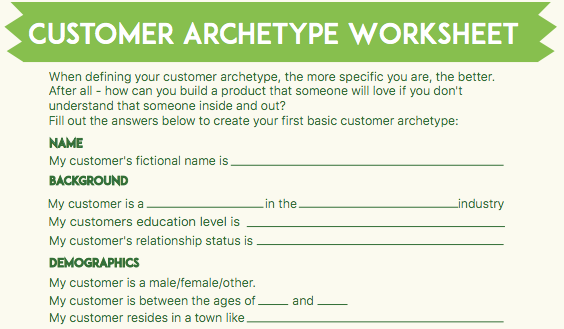
Aspiring founders who believe they’ve developed an amazing offering often think that their products will sell themselves. While there are occasional instances of unique apps, software, hardware, and services that were so valuable that they instantly made their founders famous, this is rarely the case. For the rest of us, we have to put in the work to determine just what kind of audience there is for the products we develop, and hope that what we create will satisfy their needs.
And while finding our ideal customers is a time-consuming and arduous process, there’s no denying that putting in the work will increase the chances of finding those who not only want your product, but those who NEED it. Fortunately, we’ve put together a guide that lays out how you can ensure that your customers go crazy for your product.
Define Your Initial Customer Archetype
Ideally, you should create your initial customer archetype before building a product. Whether you’re still validating your startup idea or you’re working on your MVP (minimum viable product), it is essential that you create your initial customer archetype, as it will help you guide the development of your final offering. Take the time to outline who you think your ideal customer is, and remember to be as specific as possible. Be VERY particular; making your ideal customer more real and relatable will only enable you to better understand the needs and wants of those who will invest in your product. Even giving them a name will help.
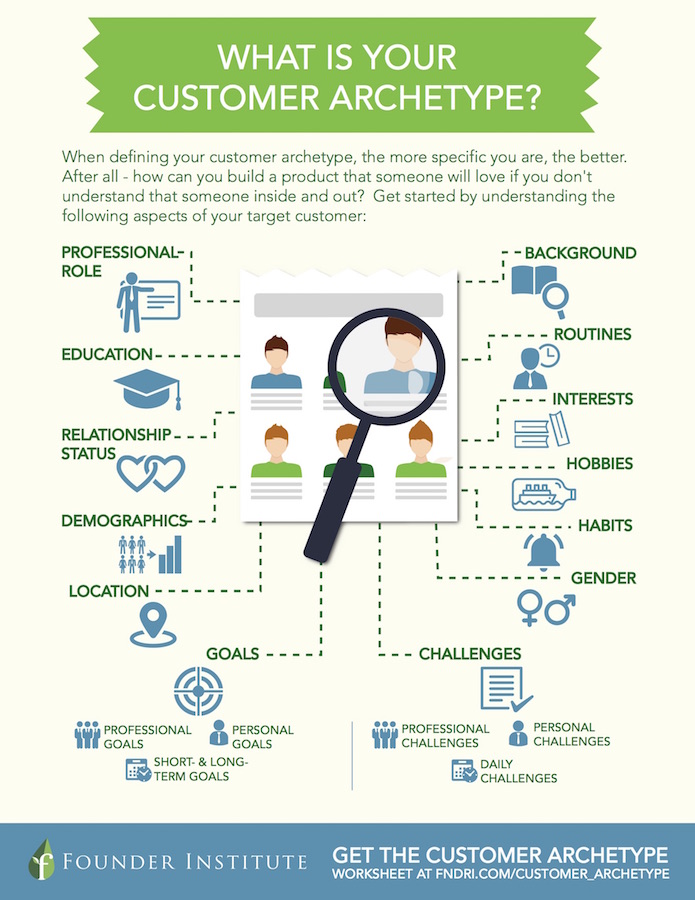
If you need assistance getting started, check out what Mark Evans has to say in his blog post, “Without Buyer Personas, You're Operating Blind”. According to the article, founders should ask themselves the following questions about their target customers:
-
What are their interests, aspirations, challenges and problems?
-
Who does the research?
-
How do they make buying decisions?
-
Who makes the buying decisions?
-
What kind of content do they consume when exploring, considering and making a purchase?
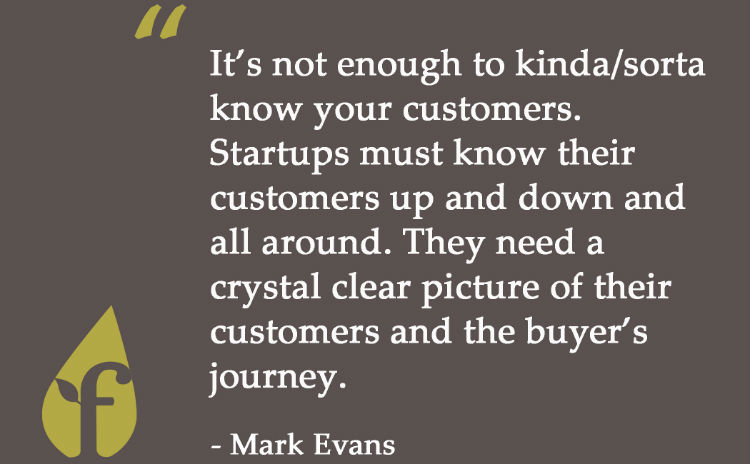
Evans recommends limiting the amount of customer personas a founder creates to reduce distractions, stating that 3-5 is a good starting number. Regardless of how many archetypes you create, each one should consist of these details:
-
Background (employment status, education, family information, etc.)
-
Demographics (gender, age, income, etc.)
-
Needs (pain points, motivations)
-
Goals
-
Objections (hurdles, obstacles)
-
Fears (competitive)
-
Interests/Hobbies.
By the time you’ve clearly listed the pertinent details of your initial customer archetype, you should have a summary that looks something like this:
“Sam is a 32 year old project manager at a mid-market bank who likes to read sci-fi novels.”
List Your Key Assumptions
Once you have a basic understanding of who your target customer is, take the time to list out the key assumptions to help you tailor your offering to their needs. While making assumptions often has a negative connotation, making careful, thoughtful assumptions about your product and customer base is an indispensable step when launching a startup because it enables founders to plan for “what if” scenarios.
The reality is that strategic assumptions form an identical, underlying foundation for the strategic plan. They underpin everything contained therein – and hence reflect the vision, strategic map, performance targets and project portfolio which subsequently follow.” - Mark Hollingworth
Defining your key assumptions is an exercise that should require at least a few hours, so make sure you set aside enough time to thoroughly complete this task. Remember, the more detailed you are, the better your final product will be, so don’t cheat!
If you need help getting started, Giff Constable (author of Talking to Humans) has created a Business Assumptions Exercise that any founder should find useful. We’ve included some of the most important points to keep in mind below. Basically, all you need to do is fill in the blanks based on data you’ve compiled on you initial customer archetype.
-
I believe that my customers have a need to ________.
-
This need can be fulfilled with ________.
-
My initial customers will be ________.
-
The primary value a customer wants to get out of my product/service is ________.
-
My customer can also get these additional benefits: ________, ________, ________, etc.
-
I will acquire the majority of my users/customers through the following channels: ________, ________, ________, etc.
-
I will make money from/by ________.
-
My main competitors are the following companies: ________, ________, ________, etc.
-
My company will beat them in the market because of: ________, ________, ________, etc.
-
My biggest product risk(s) is/are: ________, ________, ________, etc.
-
We will address our risks through: ________, ________, ________, etc.
Try to list the details in one place. Get started with our Customer Archetype Worksheet:
Once you’ve completed the above statements, list out and prioritize what you think are the most important assumptions to address in the following format:
What assumptions does my company hold, that if proven wrong, could cause the company to fail?
-
________
-
________
-
________
Test Your Initial Customer Archetype
Now that you’ve drafted your initial customer archetype and created your key assumptions from that information, it’s time to test your data. One of the best and most effective ways to test your data is through conducting extensive customer interviews. After you’ve found people who you think accurately represent your target market, set aside some time to interview them over the phone, through email, surveys, or in person. Whichever method you choose, keep in mind that the questions you ask are what ultimately matter the most.
If you need help coming up with effective customer interview questions, inbound marketer and bestselling author Mike Fishbein has listed out a multitude of questions to ask your test users in the blog post, "The Ultimate List of Customer Development Questions".
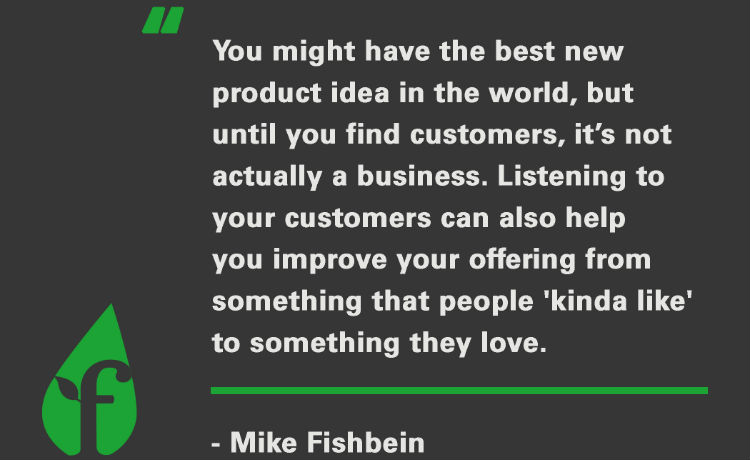
Here are some of the most important questions from Fishbein’s blog post to consider when you set out to interview your potential customers:
Customer Segmentation
-
What do you do professionally?
-
Who handles [process you’re improving] at your home/office?
-
Tell me about your role at [company]?
-
How much time do you spend on [process you’re improving]? [Specific questions related to your product/customer] – For example, “Do you have kids?”
Problem Discovery
-
What’s the hardest part of your day?
-
What product do you wish you had that doesn’t exist yet?
-
What tasks take up the most time in your day?
-
What could be done to improve your experience with [process/role]?
-
What’s the hardest part about being a [demographic]?
-
What are your biggest/most important professional and personal responsibilities/goals?
Problem Validation
-
Do you find it hard to [process/problem]?
-
How important is [value you’re delivering] to you?
-
Tell me about the last time you [process you’re improving].
-
How motivated are you to solve/improve [problem/process]?
-
If you had a solution to this problem, what would it mean to you/how would it affect you?
Update Your Customer Archetype
If you’ve followed the above steps, you should now have a wealth of information that you will use to update your initial customer archetype. To help guide you through this process, start by answering the questions below:
-
What does your customer think about your product?
-
How will your customer learn about your offering?
-
Will your customer actually use your product?
-
What will motivate your customer to engage with your offering?
-
When will your customer pay for the offering?
-
What will be the prompt that encourages your customer to pay?
-
How likely is your customer to tell others about your product?
-
How soon is your customer likely to start using your product?
-
What might prevent your customer from using your product?
-
How much is your customer willing to pay for your product? To pay for expanded features?
Your customer archetype should be very detailed once you’ve updated it, perhaps several paragraphs or pages long, and it may even go through several more iterations until you have an incredibly detailed idea of who it is you’re targeting. If you notice any gaps that you think pertain to your offering, no matter how small those concerns may be, go back and conduct more research to fill in those blanks, even if it means doing more interviews. Remember, your customer is a living being and as such, it constantly changes.
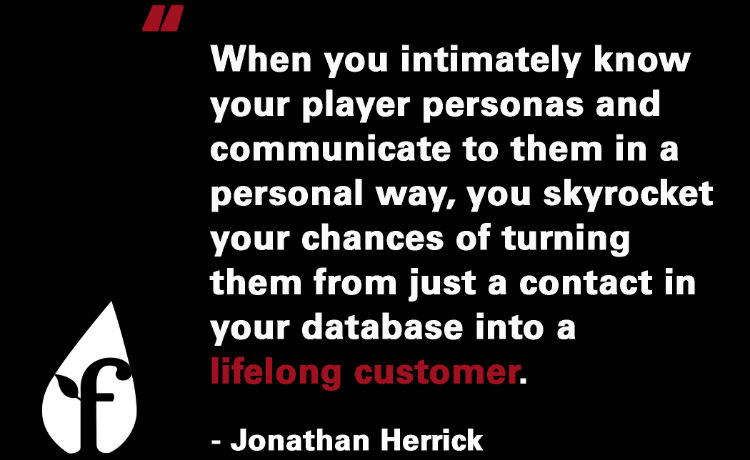
Final Thoughts
Now that you know exactly who your customer is, what they want, and most importantly, what they need, it’s time for you to go out and build something great. Keep in mind, however, that knowing your customer is an iterative process, that while your current customers may love your product now, they may not be as excited about v2. As your company grows and your offering evolves, remember to always have your ear to the ground and your finger on the pulse of the people you build your product for.
Come to a free startup event and learn from top experts!
The Founder Institute is the world’s most proven network to turn ideas into fundable startups, and startups into global businesses. Since 2009, our highly-structured accelerator programs have helped entrepreneurs raised over $1.75BN in funding across over 200 cities worldwide.
Learn more about the Founder Institute at FI.co, join an upcoming startup event at FI.co/events, or subscribe to our Insights Newsletter.

